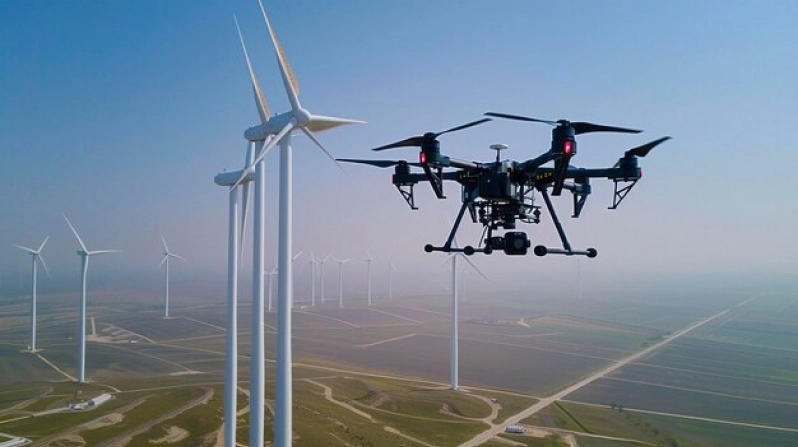Design and manufacturing engineering is a crucial part of the modern industrial world. It drives technological progress and economic development. This field combines precise technology, innovative thinking, and artistic design, requiring professionals to have broad knowledge and high-level skills. In the highly competitive global market, excellent design and manufacturing capabilities are key to a company’s success.
This blog will explore various aspects of design and manufacturing engineering, from basic principles to cutting-edge technologies. It will reveal how precise engineering practices and creative applications lead to excellence, helping readers learn strategies and methods to succeed in this complex and opportunity-filled field.
Introduction to Design and Manufacturing Engineering
Design and manufacturing engineering covers the entire process from initial concept design to final product development. It is the key to turning ideas into physical products. Whether it’s airplanes, cars, or complex electronic devices, their creation and successful use depend on clever design and highly efficient manufacturing processes. This field involves a combination of knowledge from mechanical engineering, electrical engineering, and materials science, and requires engineers to have a wide range of skills and sharp innovative abilities.
Why is Design and Manufacturing Engineering Important?
In the global market, businesses must continually innovate to stand out in fierce competition by producing high-quality and cost-effective products. Design and manufacturing engineers play a crucial role in this process. They are not only drivers of innovation but also experts in improving production efficiency and controlling costs. By precisely optimizing design and manufacturing processes, engineers can significantly boost production efficiency, reduce resource waste, lower production costs, and greatly enhance product quality and reliability.
Core Concepts of Design Engineering
Creativity and Innovation
The first step in design engineering is the spark of creativity, which forms the foundation of the entire process. Engineers start from scratch, turning initial ideas into concrete product concepts. They need not only a rich imagination and innovative thinking but also a keen understanding of market needs and user expectations. This phase involves not just brainstorming but also deep insight into industry trends and precise grasp of user behavior. Through thorough market research and user feedback, engineers ensure that each design concept is both feasible and marketable, laying a strong foundation for success. Their job is to blend bold ideas with real-world needs, creating products that are both innovative and practical, requiring high levels of professional skill and creative thinking.
Combining Function and Aesthetics
A successful design must not only be functional but also visually appealing. Modern engineers must consider the product’s appearance, texture, feel, and overall user experience to ensure it meets user needs technically while also providing visual and tactile pleasure. The product’s design should reflect the brand’s core values, have a distinct personality, and seamlessly integrate with its functionality to create something both practical and beautiful. Additionally, engineers must focus on intuitive and comfortable user interactions, striving for perfection in every detail to stand out in a competitive market and earn consumer trust and preference.
Design for Manufacturability
Engineers must also consider the manufacturability of the product during the design process. This crucial factor requires engineers to anticipate potential challenges in production to ensure that the design not only meets performance requirements but also remains efficient and cost-effective in mass production. Specifically, engineers need to optimize the product’s structure and material choices for easy processing, assembly, and inspection during mass production. They must also balance the complexity of manufacturing processes, aiming to simplify steps to reduce human error, lower production costs, and speed up production cycles.
Key Aspects of Manufacturing Engineering
Material Selection
Choosing the right materials is crucial in product design and manufacturing. It affects the product’s performance, durability, cost, and environmental impact. Engineers must carefully analyze the product’s use environment, functional requirements, and potential challenges like temperature, pressure, and chemical exposure. Different materials, such as metals, plastics, ceramics, and composites, have unique properties and uses. For instance, metals are often used for structural parts due to their strength and durability, while plastics are popular in consumer products for their light weight and ease of processing. Engineers must also balance material processing performance and cost-effectiveness to achieve the best value. Additionally, with the trend towards sustainability, the environmental impact and recyclability of materials have become important considerations.
Processing Techniques
Manufacturing engineers need to master various processing techniques to ensure product accuracy, surface quality, and overall performance. Traditional techniques like casting, forging, stamping, welding, and machining have well-established technologies that meet most industrial needs. Casting is suitable for complex shapes and large parts, while forging improves material strength and toughness. Machining is widely used for precision parts due to its high accuracy and efficiency. With technological advances, emerging techniques like 3D printing and additive manufacturing offer greater design freedom, allowing for complex structures and customized products that traditional methods may find difficult to produce.
Quality Control
Quality control is a core part of manufacturing engineering, ensuring that products meet expected performance and reliability. Engineers must closely monitor various process parameters throughout manufacturing to prevent quality issues. Modern quality control techniques, such as Statistical Process Control (SPC) and Six Sigma, are essential for improving product quality. These methods analyze production data to identify and eliminate variations and defects, leading to continuous improvement. Additionally, comprehensive testing and inspection methods, like Non-Destructive Testing (NDT), optical measurement, and coordinate measurement technology, accurately assess product dimensions, shape, and material properties to ensure the final product meets design specifications and customer expectations.
Future Trends in Design and Manufacturing Engineering
Digitalization and Smart Technology
With the rapid development of Industry 4.0, digitalization and smart technology have become key trends in design and manufacturing engineering. Digital technologies, including the Internet of Things (IoT), big data, and artificial intelligence (AI), are transforming traditional production methods. IoT enables devices and systems to connect and communicate in real-time, providing seamless data transfer and monitoring. Big data technology processes vast amounts of information for deep analysis, optimizing production processes, predicting maintenance needs, and improving decision-making. AI brings smart automation and optimization, performing complex pattern recognition and intelligent forecasting to increase production efficiency, reduce error rates, and enhance product quality.
Sustainability
With growing environmental challenges worldwide, sustainability has become a crucial goal in design and manufacturing engineering. Engineers need to consider resource efficiency during the design phase and implement measures to reduce waste and emissions during manufacturing, minimizing environmental impact. Promoting the recyclability and reusability of products is also essential. This includes selecting eco-friendly materials, designing products that are easy to disassemble and recycle, and optimizing production processes to reduce resource consumption.
Personalization
As consumer demand for personalized products grows, the market for customization is expanding. Modern manufacturing uses flexible manufacturing systems and mass customization technologies to meet these needs effectively. Flexible manufacturing systems allow production lines to quickly adjust to different product designs and specifications. Mass customization combines the efficiency of standardized production with personalized design requirements, enabling engineers to offer highly customized solutions while maintaining large-scale production. This approach not only increases customer satisfaction but also provides businesses with new market opportunities and competitive advantages.
How to Become an Excellent Design and Manufacturing Engineer
Work Hard, Master the Basics
Design and manufacturing engineering covers a wide range of disciplines, including mechanical engineering, electrical engineering, and materials science. Engineers must have a solid foundation in these areas to handle complex projects effectively. In addition to deepening their understanding of basic subjects, engineers need to stay updated with the latest technological trends and methods to meet changing market demands and technical challenges. Continuous learning and training, such as taking professional courses, attending industry seminars, and obtaining technical certifications, are crucial for enhancing skills. This ongoing process of expanding knowledge helps engineers find suitable solutions to new problems and stay competitive in the industry.
Cultivate Innovative Thinking
Innovation is the driving force behind progress in design and manufacturing engineering. Engineers should develop and stimulate their innovative thinking, challenge traditional ideas, and explore new design and manufacturing methods. By participating in innovation projects and interdisciplinary collaborations, engineers can view problems from different perspectives and discover new solutions. Encouraging oneself to try new methods, apply new technologies, and learn from failures are important ways to enhance innovation skills. Additionally, keeping an open mind and actively accepting new ideas and feedback also helps in continuously improving and refining one’s innovative thinking.
Actively Practice and Gain Experience
Theoretical knowledge must be translated into practical skills through hands-on experience. Engineers should actively participate in various design and manufacturing projects to gain valuable practical experience and improve their operational and problem-solving abilities. Working on real projects helps engineers understand how theories apply in practice, enhances their ability to handle pressure, and improves teamwork skills. Collaborating with team members and industry experts is also a key way to gain experience, refine knowledge, and stay informed about the latest industry information and technological developments.
Conclusion
Design and manufacturing engineering is a field full of challenges and opportunities. It requires engineers to have solid professional knowledge, innovative thinking, and practical skills. In the future, key trends such as digitalization, smart technology, sustainability, and customization will shape the industry. These trends will drive the industry towards greater efficiency, environmental friendliness, and personalization, leading to new technological breakthroughs and market opportunities. This article aims to provide readers with a deeper understanding of the core aspects and future trends in design and manufacturing engineering. By exploring these key areas, readers can better grasp industry trends, enhance their professional skills, and prepare thoroughly for future engineering practices.




